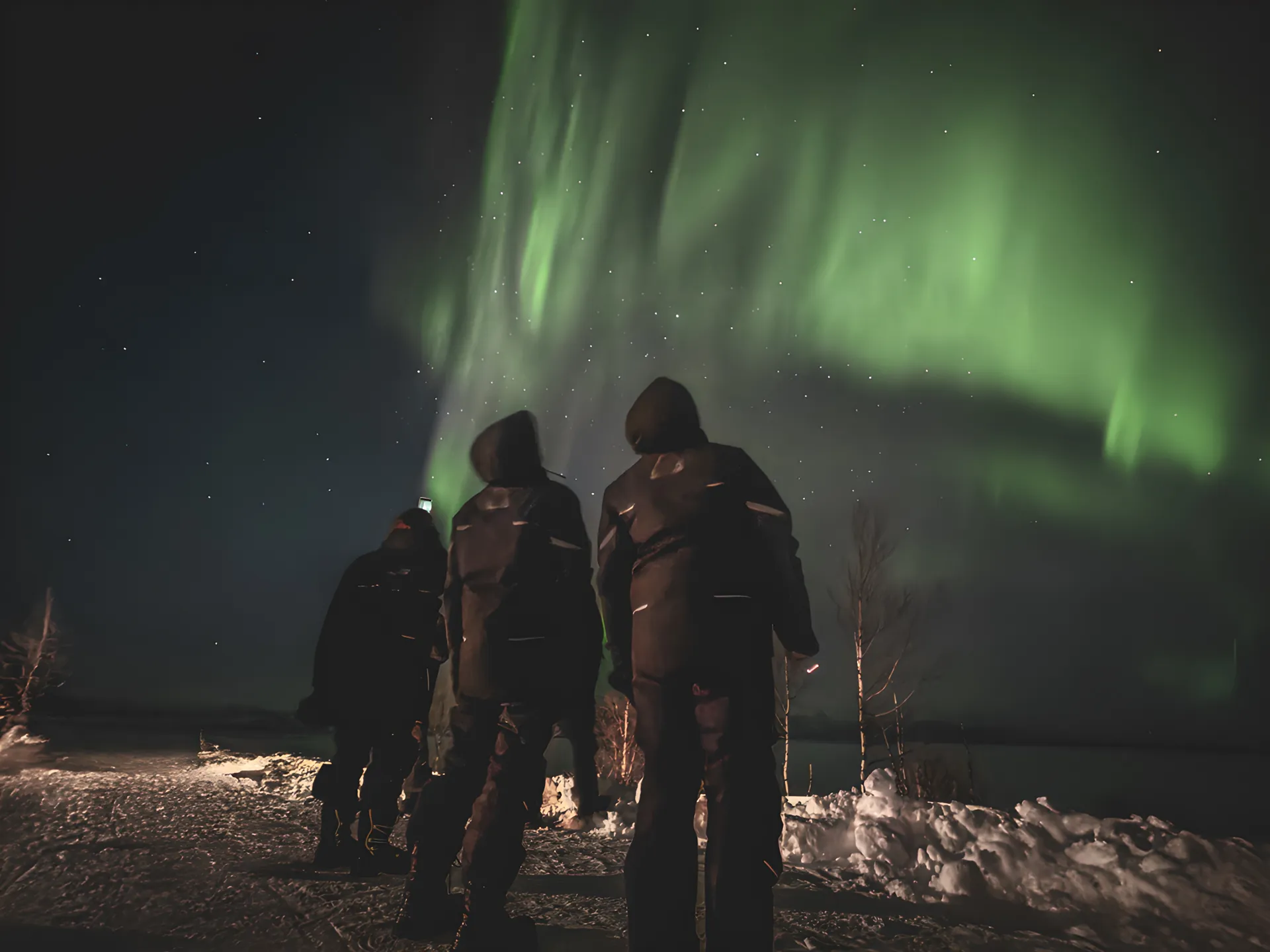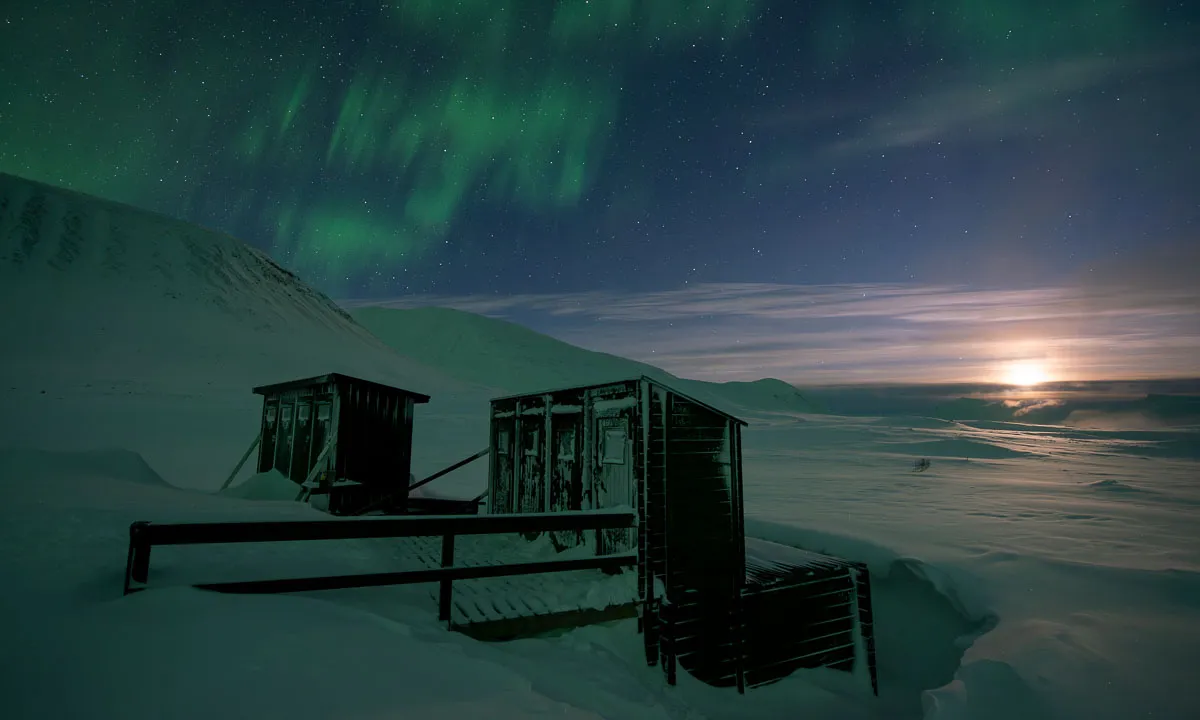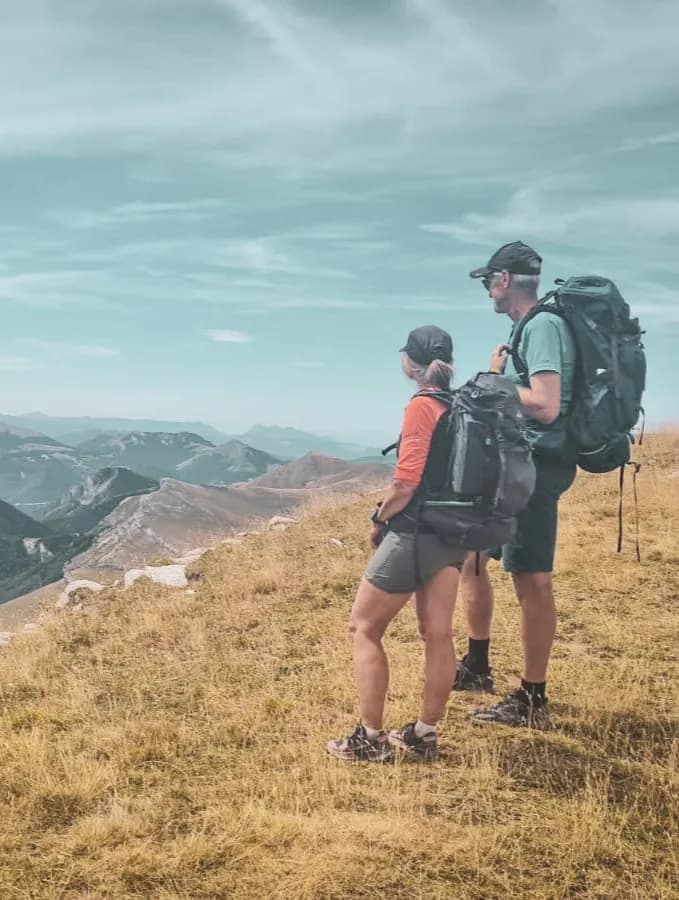Observing and photographing the Northern Lights: Our top tips and best practices
To see the northern lights is to experience a suspended moment. Follow our advice on choosing the right night to capture the magical nights of Lapland.

Seeing the Northern Lights isn't just ticking a box on a travel bucket list - it's experiencing a suspended moment.
With a few simple tips, you can really maximise your chances of witnessing this exceptional natural spectacle and photographing the Northern Lights in the best possible conditions.
Watch the sky and the weather
Make sure the weather is clear
To be able to observe and photograph the Northern Lights, you need an open sky that lets them show themselves. So you need a clear night, with few or no clouds. Otherwise, the clouds may move during the night and disappear, but that's the only time you'll have a chance of photographing them. The moon can also be a problem. When the moon is full, its bright light can be very powerful and make it difficult to see the aurora.
Rely on indicators
An essential indicator is the KP index, a scale from 0 to 9 that measures the intensity of geomagnetic activity. It is estimated that a minimum of 3 KP is required to have a chance of observing and photographing the Northern Lights, but the higher the index, the greater the chances, even without being the most northerly point in the country. The official forecasts from NOAA's Space Weather Prediction Center are an excellent resource for anticipating peaks in activity over several days.
Our advice: choose your nights carefully, keep an eye on these indicators in parallel, and be flexible. During the polar night, the sky may be overcast at 9pm, but be completely clear by midnight. A simple break in the weather may be enough to make it a night of dawn.
Choose the best time
Which period?
The auroral period extends from the end of August to the end of April, but it is particularly in October, February and March that the magic happens. In Lapland in particular, the nights are long and dark and the sky is clear. The sun, for its part, enters a phase of intense activity, particularly in view of the solar peak forecast for 2026, which promises to be an excellent year for photographing the Northern Lights. Find out more in our article on the subject!
What time of day?
The best time to photograph the Northern Lights is generally between 8pm and 2am. But beware, the aurora like to surprise: they can appear earlier, or after midnight, when everything seems calm. The secret? Patience and trust. Stay outside, look north... and wait for the sky to open up.
Photograph the Northern Lights
What your eyes see is already extraordinary, but photographing the Northern Lights often reveals even more detail through the lens and creates memories that you'll never forget.
Choosing a camera
An SLR or hybrid camera is the ideal tool for a trip to Lapland: it allows you to take lots of photos of your various activities during your stay [link Article Immersion in nature in Lapland: Northern Lights tours] and to photograph the Northern Lights with the best quality,
Whatever the model, the most important thing is to be able to adjust the light manually. If it has a wide-angle lens (14-24 mm), that's even better. This will give you a wide frame for your photo, taking in the whole of the dawn and even the surrounding countryside.
Otherwise, a smartphone may suffice. If it has good image quality, a pro mode and a night mode, you can already do a lot with it.

Capturing the light
In terms of settings, the first step is to maximise the light captured by the camera. To do this, you need to :
- choose the maximum image quality available (RAW format in particular)
- manually set the ISO to between 800 and 1600, or even 3200 if necessary. This setting increases the camera's sensitivity to light.
- Choose the widest aperture so that the camera captures as much light as possible. This aperture should therefore be low (ideally f/2.8 or less).
- Adopt a long exposure time of 3, 5, 15 or 20 seconds, depending on the light intensity. This is one of the most important parameters for obtaining a quality image, but also one of the most tricky, because it potentially leads to more blur.
These are recommendations and scales to give an idea. In practice, you need to test, adjust and find the balance between capturing too much light, which can deteriorate the quality of the photo, and capturing too little, which will reduce the intensity of the light.
Avoid vibrations
As mentioned above, adjustments can make photography difficult to achieve. Ideally, you should avoid any movement of the camera when taking the photo.
You can use a tripod to ensure that the camera is stable and trigger the shot with a self-timer.
Keeping it long
If you want to take good photos, you need to be patient and, above all, have the right equipment for the cold polar conditions. In winter in Lapland, temperatures easily drop to -20°C, if not more.
How do I get to Lapland?
There are several options for getting to Lapland and hoping to see or photograph the Northern Lights. You can choose to fly, with regular flights to Rovaniemi or Kittilä in Finland, or Tromsø in Norway.
But at Wildhartt, we invite you to choose the train, a gentle, responsible and comfortable alternative: from Helsinki, a night train takes you directly to Rovaniemi(Father Christmas's official town!) in around twelve hours, with the option of continuing on to Kemijärvi, even further north. It's an ideal way to enter the country, while starting your journey in the Nordic atmosphere by discovering the landscapes from your window.

Make the most of the moment
Photographing the Northern Lights is an exceptional experience, but you should also take a moment to enjoy the spectacle with the naked eye and the region. This experience should be seen as a way of reconnecting with the world and with nature. It's a natural phenomenon that involves the sun, the sky and the light, and one that we can't control: a fine demonstration of the beauty of the world and its unpredictability.
In the polar cold and its intense calm, you have the chance to observe this unparalleled light show. It's this raw moment that will stay with you the longest.
Wildhartt offers a wide range of magical experiences in Finnish, Norwegian and Swedish Lapland. Enjoy the snow-covered natural landscapes of this land, travel the country with sled dogs and observe the fantastic Northern Lights. Find out more about our expeditions here!
You might also like these adventures …

Stevenson’s trail: hike with a Donkey through the Cévennes

Hut-to-hut trekking around Monte Viso

Hiking in Mullerthal: Luxembourg's little Switzerland

Hike the Ecrins with a Donkey by your Side

The king's trail: hiking through Swedish Lapland
